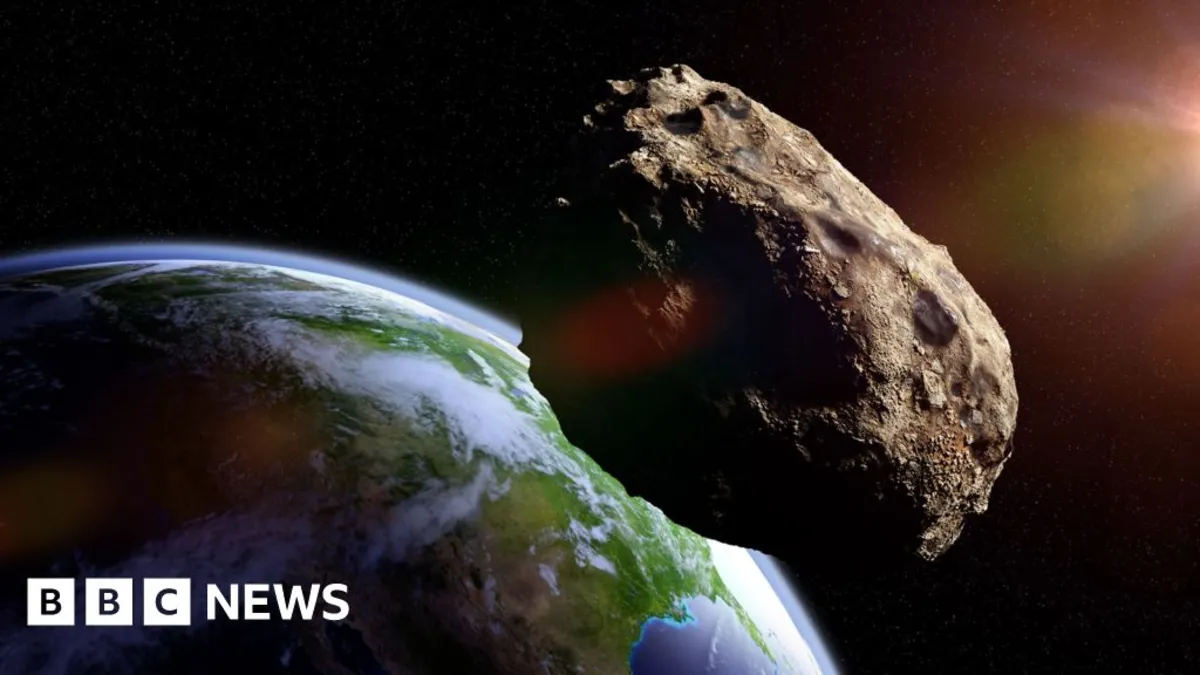
Asteroids have long captivated the attention of scientists and enthusiasts alike. Recently, an asteroid named 2024 YR4 became the focal point of discussions as projections about its potential collision with Earth fluctuated. Initially, researchers estimated a 3.1% chance of impact, but recent calculations have significantly reduced this to just a 0.28% probability. Meanwhile, the likelihood of it striking the Moon stands at 1% according to NASA.
While 2024 YR4 has captured headlines, numerous other asteroids have slipped past Earth undetected. These celestial bodies often pass closer than the Moon, qualifying as near-misses in astronomical terms. Many of these smaller asteroids may even enter Earth's atmosphere, burning up without drawing attention.
Asteroids, sometimes referred to as minor planets, are remnants from the solar system's formation approximately 4.6 billion years ago. Their orbits often bring them close to Earth, influenced by the gravitational pull of larger planets. Despite their proximity, our awareness of these celestial objects has only recently evolved.
Professor Mark Boslough from the University of New Mexico notes that comprehensive monitoring of near-Earth objects began in the late 20th century. Before this period, humanity remained largely oblivious to the potential threats posed by these space rocks.
Large asteroids, measuring 40 meters or more, routinely pass between Earth and the Moon several times per year. One notable historical event is the 1908 Siberian explosion, caused by an asteroid of comparable size, which resulted in widespread damage over a 200 square mile area.
The most significant near-miss prior to 2024 YR4 was an asteroid named Apophis, discovered in 2004. Measuring 375 meters across, Apophis was initially deemed the most hazardous asteroid ever detected. It took nearly a decade of observation to ascertain that it posed no threat to Earth.
In response to potential asteroid threats, significant strides have been made in the field of planetary defense. Professor Patrick Michel from the French National Centre for Scientific Research highlights the challenges faced with Apophis, where scientists lacked clear protocols for addressing such threats. However, the formation of the Space Mission Planning Advisory Group has changed the landscape. This group now advises governments on asteroid threats and conducts drills for potential impacts.
Dr. Boslough compares our current readiness to hurricane preparedness, with evacuations and infrastructure protection measures in place. The Space Mission Planning Advisory Group plans to reconvene in April to assess the evolving situation with 2024 YR4, with most scientists predicting the threat will have diminished by then.
Both NASA and the European Space Agency have developed techniques to redirect threatening asteroids. The Double Asteroid Redirection Test (DART) demonstrated success by altering the trajectory of the asteroid Dimorphos through a spacecraft collision. However, the feasibility of applying this method to 2024 YR4 remains uncertain due to its composition and the limited time available for intervention.
While direct strikes on populated areas could be catastrophic, impacts in remote regions offer valuable scientific insights. Asteroids that land provide tangible samples from distant parts of the solar system, enriching our understanding of Earth's history and cosmic phenomena.
In Antarctica alone, nearly 50,000 asteroids have been discovered, including the renowned ALH 84001 from Mars. This particular specimen contains minerals revealing Mars's warm and water-abundant past. Moreover, the detection of asteroid 33 Polyhymnia in 2023, potentially containing a superheavy element not found on Earth, hints at the untapped scientific potential of asteroids.
With an increased probability of 2024 YR4 colliding with the Moon, some scientists are eager to observe the impact. Such an event could provide concrete data for questions previously explored only through simulations. Professor Gareth Collins from Imperial College London underscores the significance of obtaining real-world data to refine our understanding of asteroid impacts on Earth.